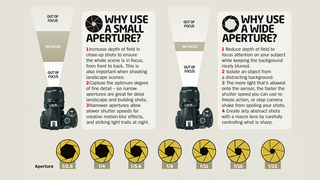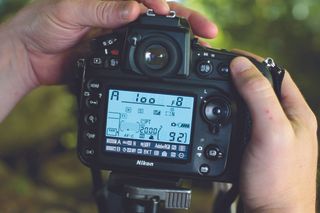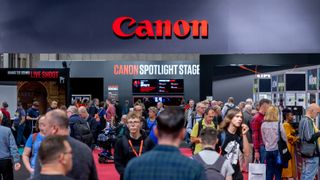The intensity of light reflecting off a scene or subject has a particular brightness value, and this is measured by the light meter within a camera. No actual brightness value is given to you, though – instead it is expressed as a combination of aperture and shutter speed at a specific ISO setting.
Let’s say you set your ISO to 100 and in Aperture priority mode, you dial in an aperture value of f/11. With those two values in place, you then frame up on a landscape, and see in the viewfinder that the camera gives you a shutter speed of 1/125sec.
This gives you one combination of camera settings that will give a good exposure for the luminance level of the scene, but because aperture, shutter speed and ISO values are inter-related variables, you could change any one of them to a different setting and still get an accurate exposure, provided you compensate for the change with one of the other variables.
EV and exposure combinations

For example, if you wanted a smaller aperture to get more depth of field, you could close it down by one stop to f/16 to let half the amount of light through the lens. To make up for this lack of light, you’d now have to expose the frame for twice as long to get a good exposure, so all you’d have to do is double the shutter speed time from 1/125sec to 1/60sec.
Alternatively, you could get even more depth of field by closing down another stop to f/22, but to avoid underexposing the scene, you’d have to make the shutter speed twice as long once more, by doubling 1/60sec to give 1/30sec.
So in this quick example, with the same luminance level, we’ve already created three options that will all give us the same overall brightness of the exposure:
1/125sec at f/11, ISO 100
1/60sec at f/16, ISO 100
1/30sec at f/22, ISO 100
There are also a whole lot more options at this same EV, such as 1/500sec at f/8, 1/1000sec at f/5.6, 1/2000sec at f/4 and 1/4000sec at f/2.8 – all derived by halving or doubling the aperture and shutter speed to give the same combined value. If you change the ISO setting, then we get another stack of options, and this leads to that fact that one single EV gives a vast range of different choices, which can be a bit overwhelming for a photographer trying to get a shot before the light changes!
Get the Digital Camera World Newsletter
The best camera deals, reviews, product advice, and unmissable photography news, direct to your inbox!
Are Exposure Values useful?

For this reason, although the concept of EVs brings a broader understanding of the relationship between light (aperture) time (shutter speed) and sensitivity (ISO), it is of little practical use when you’re out in the field bagging shots. No one wants to consult an exposure chart every time they take a picture – especially when the camera will do all the maths for you if you shoot in a semi-automatic exposure mode like Aperture priority or Shutter priority.
Very few photographers would have any idea that the Exposure Value used in every case above is EV 15, and that’s because it’s not a system that’s of any real use. Modern cameras will perform all the calculations for you if you simply adjust the setting you want to change. Understanding the way one exposure variable affects another is vital for a good grasp of photography, but knowing which EV numbers produce which combinations is not something you’ll ever need.
The only exception is if you are using a handheld light meter which gives you an exposure reading in EV, which you then have to convert into combinations of shutter speed and aperture yourself, typically with a dial on the meter.
Read more:
• Best cameras for beginners
• Best DSLRs
• Best mirrorless cameras
• Best light meters
• DCW Dictionary of photography






